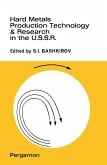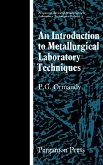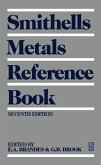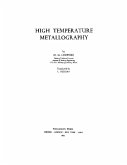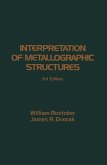Modern Metallography focuses on the defects in the properties of metals, such as precipitates, cracks, grain boundaries, dislocations, stacking faults, and impurity atoms.
The publication first offers information on reflected light microscopy and high temperature microscopy. Discussions focus on specimen preparation, defects of lenses, methods of increasing the resolving power of an objective, long working distance objectives, and typical hot-stage experiments. The text then elaborates on surface topography and polarizing microscope, including oblique illumination, interferometry, examination of anisotropic surfaces, and other uses of polarized light microscopy.
The text takes a look at X-ray metallography and specialized X-ray diffraction techniques. Topics include Laue method and orientation, structure factor, powder method and the accurate measurement of lattice parameters, Bragg law, sheet textures, and preferred orientation. The publication further elaborates on electron microscopy and metallography at the atomic level.
The manuscript is a valuable reference for students and readers interested in modern metallography.
The publication first offers information on reflected light microscopy and high temperature microscopy. Discussions focus on specimen preparation, defects of lenses, methods of increasing the resolving power of an objective, long working distance objectives, and typical hot-stage experiments. The text then elaborates on surface topography and polarizing microscope, including oblique illumination, interferometry, examination of anisotropic surfaces, and other uses of polarized light microscopy.
The text takes a look at X-ray metallography and specialized X-ray diffraction techniques. Topics include Laue method and orientation, structure factor, powder method and the accurate measurement of lattice parameters, Bragg law, sheet textures, and preferred orientation. The publication further elaborates on electron microscopy and metallography at the atomic level.
The manuscript is a valuable reference for students and readers interested in modern metallography.
Dieser Download kann aus rechtlichen Gründen nur mit Rechnungsadresse in A, B, BG, CY, CZ, D, DK, EW, E, FIN, F, GR, HR, H, IRL, I, LT, L, LR, M, NL, PL, P, R, S, SLO, SK ausgeliefert werden.



